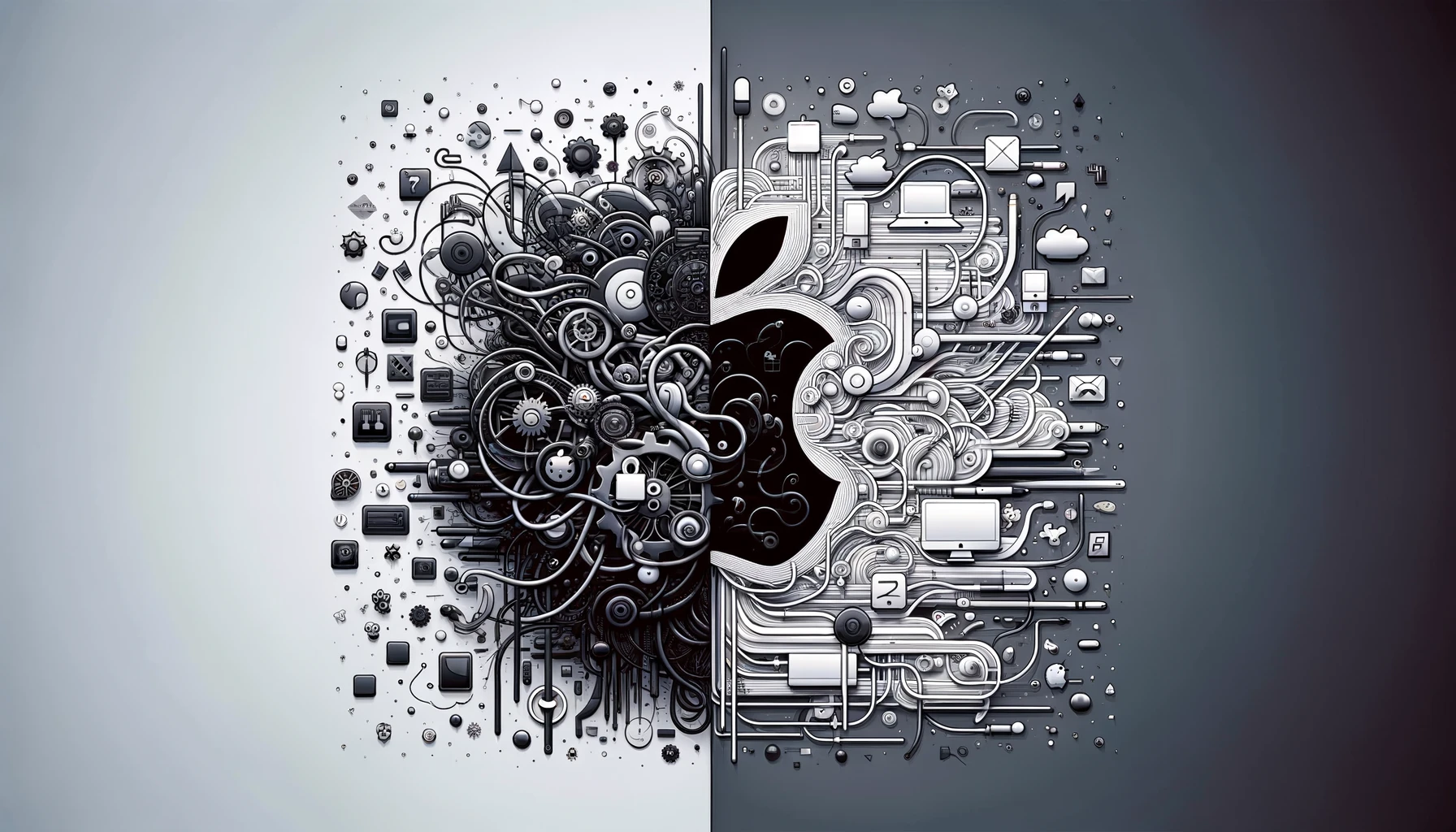Because today appearance plays an essential role in our Western world, living in simplicity has become… complicated. Synonymous with sobriety, simplicity allows no pretense, nor excessive artifice or ambition. It must first be that of our thought. Common sense, sincerity, and humility are our guides to ward off the temptations of the unnecessary, of sophistication, or of the trendy fad. By retaining only the essentials, by freeing ourselves from all subterfuge, simplicity becomes generous in return, offering beauty and well-being.
«Simplicity is the ultimate achievement. After having played many notes, more and more notes, it is simplicity that emerges as a reward crowning the art.» — Frédéric Chopin
In my job as a user experience (UX) architect, this notion serves as my basic reference in all my visual decisions: ‘Is it simple enough to be understood without explanation?’…
Two important books have marked my learning and form the foundation of my passion for design, especially «Low-Tech». I highly recommend reading two essential books: ‘Don’t Make Me Think‘ by designer Steve Krug, and ‘The Laws of Simplicity‘ by researcher and professor John Maeda.
Although Krug and Maeda have different backgrounds, their respective works show significant correlations, especially regarding simplicity, user experience, and the fusion of design with technology. Both have influenced how professionals and companies envision and implement design in the digital world.
«Simplicity is the perfect harmony between the beautiful, the useful, and the just.» — Frank Lloyd Wright
• Simplicity and Clarity: Both emphasize the importance of simplicity in design. Krug, with his famous adage ‘Don’t Make Me Think’, suggests that interfaces should be intuitive and easy to understand. Maeda, in ‘The Laws of Simplicity’, also explores how simplicity can be integrated into design and technology.
• User at the Center: They both focus on the importance of placing the user at the center of the design process. Krug insists on easy-to-use websites and the need to understand how users interact with these sites. Maeda, for his part, advocates a design that meets users’ needs and behaviors.
• Convergence of Design and Technology: Krug and Maeda recognize the importance of technology in modern design. While Krug focuses on usability in the context of digital interfaces, Maeda explores how design and technology intersect more broadly and conceptually.
• Educational and Formative Approach: Both have played significant educational roles, whether through teaching (Maeda at MIT and RISD) or by writing influential books in the field of interface design (Krug).
• Innovation and Creativity: Krug and Maeda encourage innovation in their respective fields. Krug with his pragmatic methods to improve user experience, and Maeda with his vision integrating art, design, and technology.
«Simplicity stands out, while complexity will inevitably get lost in the crowd.» — Kevin Barrett
Simplicity, as we see, is an often underestimated virtue that proves to be a powerful force, especially in the world of design and technology. Like Apple, which revolutionized the technology industry with its minimalist approach, simplicity has become a pillar of innovation and efficiency. This philosophy, embodied by figures such as Steve Jobs and adopted by other design leaders like Steve Krug and John Maeda, highlights the importance of streamlining in conception. By eliminating the superfluous, the essential is highlighted, creating products that are not only aesthetic but also intuitive and functional.
However, simplicity goes beyond mere aesthetics. It involves a deep understanding of user needs, finesse in the art of detail, and harmonious collaboration between different professions. Apple, by integrating these elements, has not only established a new standard for industrial design but has also influenced entire sectors, proving that simplicity can be synonymous with sophistication and efficiency.
«Simplicity is the ultimate sophistication.» — Leonardo da Vinci
In this praise of simplicity, it is important to recognize that it is not an end in itself, but rather a means to achieve a superior user experience. The principles of clarity, functionality, and streamlined aesthetics are key components for creating products and services that not only meet users’ needs but anticipate and delight them. Ultimately, simplicity is the essence of genius, a bridge between the complexity of technology and the elegance of design, a timeless philosophy that will continue to inspire and transform the world around us.”








